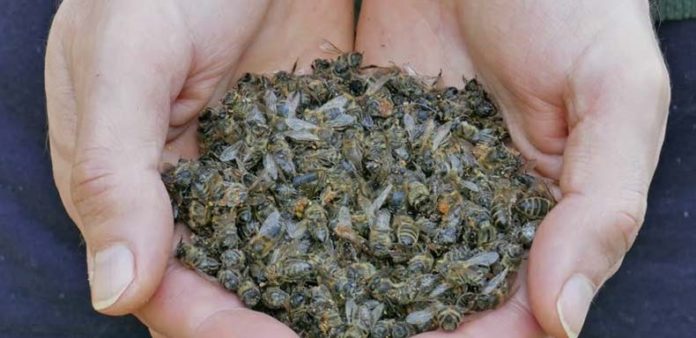
The U.S. Fish and Wildlife Service has proposed listing a species of bee Native to North America, as an endangered species. The rusty patched bumble bee, a pollinator native to the upper Midwest and Northeastern United States, is the first species of bee in the continental United States to be formally proposed for listing under the U.S. Endangered Species Act.
“[The] Endangered Species Act safeguards are now the only way the bumble bee would have a fighting chance for survival,” Sarina Jepsen, of the Xerces Society for Invertebrate Conservation, told Reuters.
The rusty patched bumble bee, named for the red blotch on their abdomen, is one of 47 varieties of native bumble bees in the United States and Canada. The rusty bumble bee used to roam at least 26 states in the Midwest and Northeast; however, in recent years, sightings of the bees have been limited to a small fraction of these states. In fact, since the late 1990s, rusty bumble bee populations have plummeted by as much as 90 percent, according to the Fish and Wildlife Service.
Bumble bees, as distinguished from domesticated honey bees, are responsible for pollinating about a third of crops in the U.S., making them vital to agricultural sustainability. It is estimated that bumble bees’ annual economic value to farms stands at around $3.5 billion.
“As pollinators, rusty patched bumblebees contribute to our food security and the healthy functioning of our ecosystems,” the Fish and Wildlife Service said in a statement.
Disease, pesticides, climate change, and habitat loss have been named as the factors driving bee populations into decline and, in some cases, to extinction. According to the International Union for the Conservation of Nature, more than a quarter of the 47 varieties of native bumble bees in the United States and Canada face a risk of extinction.
According to Reuters, Jepsen believes the protections proposed for the rusty bumble bee will intensify the debate over the degree to which so-called neonicotinoid pesticides have contributed to the decline of native bees.
Neonicotinoid insecticides, one of the most widely used insecticides in the world, have been proven to have a number of devastating effects on honey and wild bee populations. Evidence from recent studies have suggested that when exposed to the pesticide, bees can become susceptible to viral infections and mites.
Rusty patched bumble bee proposed for U.S. #endangered species status: https://t.co/MlgaziRYhA
— Defenders Wildlife (@Defenders) 23 September 2016
Another study, published in Proceedings of the Royal Society B, found that male bees exposed to thiamethoxam and clothianidin, two chemicals from the neonicotinoid family of insecticides, exhibited a 40 percent decrease in living sperm. The same study also found that neonicotinoids also significantly reduce the lifespan of male bees; reduce the number of bumblebee queens produced; and severely cut the survival and reproduction of honeybee queens.
Earlier this year, the first long-term study of neonic impacts on wild bee populations revealed a strong link between the large-scale, long-term decline in wild bees across England and the use of neonicotinoid insecticides. The study, published in the journal Nature Communications, concluded that bees exposed to neonicotinoid treated oilseed rape were three times more likely to experience population declines than bees foraging from other crops or wild plants.
“Our results provide the first evidence that sub-lethal impacts of neonicotinoid exposure can be linked to large-scale population extinctions of wild bee species, with these effects being strongest for species that are known to forage on oilseed rape crops,” the researchers concluded.
The public comment period initiated by the proposed listing runs through Nov. 21, 2016. During this period, members of the public, scientists and government agencies are welcome to submit expert opinions and other input that could aid the agency in its decision.
Image: USGS Bee Inventory and Monitoring Lab from Beltsville, Maryland, USA (CC BY 2.0)
You want to support Anonymous Independent & Investigative News? Please, follow us on Twitter: Follow @AnonymousNewsHQ
This article (Rusty Patched Bumble Bee to be Listed as Endangered Species in US) is a free and open source. You have permission to republish this article under a Creative Commons license with attribution to the author and AnonHQ.com.





I always ask the question, “what can I do?” I am just one person who can stop buying honey and not constribte to the velocity of the fast growing problem. What else can I do?
AA LOTT
That’s the same question I always ask myself. I feel powerless against these huge things that nobody notice…
The US exacerbated this issue recently killing millions of bees whilst spraying against Zika virus when they completely ignored advice to spray at night when bees are in the hive and sprayed instead early morning having a devastating impact on apiaries.